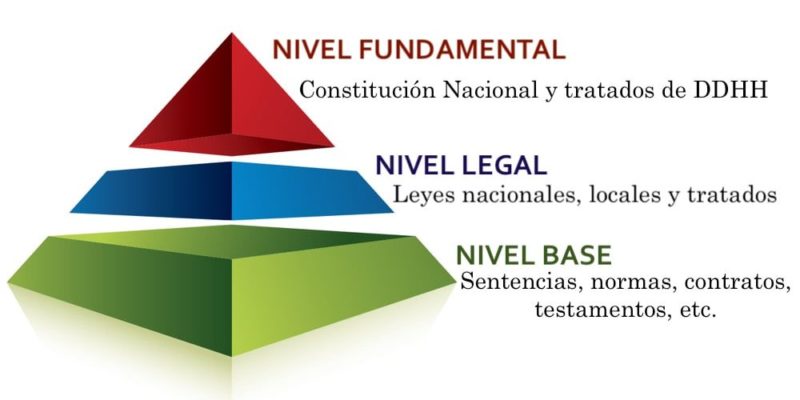We explain what the Kelsen Pyramid is in the legal system, its levels and control mechanisms. Also, what does it represent in Mexico.

What is Kelsen's Pyramid?
The Kelsen Pyramid, the Kelsenian Pyramid or the Pyramid of the legal hierarchy It is the graphic representation of the legal system through a pyramid segmented into various strata or levels. It represents a vertical relationship between the different legal norms, as understood by the Austrian jurist and philosopher Hans Kelsen (1881-1973), from the positivist doctrine.
This normative pyramid arises from the idea that every legal norm obtains its value from a higher norm in hierarchy, according to three different hierarchical levels into which Kelsen divided his pyramid:
- The fundamental level At the top of the pyramid, where the Magna Carta, National Constitution or the base legal text from which all other laws and provisions emanate, is located. It is the key text over which no legal institution has hierarchy.
- The legal level. Located on an intermediate step and can be divided into many substeps, along which the set of laws that make up life within the constitutional legal framework will be ordered according to hierarchy, from the most fundamental (top) to the least fundamental (bottom).
- The base level. At the end of the pyramid, being the widest, it contains the rulings of legal organizations, which are much more abundant compared to the previous steps, at the same time as less fundamental.
This hierarchical order is sustained, according to Kelsen, due to two different forms of control mechanism, which are:
- By way of exception. Those decisions of ordinary courts in which a judge rules on the application of some rule and its relationship with the rest of the pyramid, sometimes having the precedent of customary justice.
- By way of action. When specialized bodies (such as the Supreme Court) declare some rule unconstitutional and therefore prevent it from being part of the legal system, completely losing its entry into force.
Kelsen Pyramid in Mexico
In the Mexican case, the Kelsen Pyramid is made up of four hierarchical levels, which are:
- The Political Constitution of the United Mexican States Located at the top of the country's Kelsen Pyramid is Magna Carta, as in most modern democratic republican states. It consists of three fundamental parts: the preamble, the dogmatic part and the organic part. Along with it are the International Treaties on Human Rights that the nation has signed.
- Federal Laws The second step of the Pyramid is occupied by the set of federal laws, given that it is a federal nation. These laws are responsible for governing all of the different Mexican states, apply to the entire nation as a whole and are made up, in turn, of the following sub-steps:
- The formal laws. That is, the State Constitutions, State Laws, Organic Laws and Official Standards.
- International Treaties not related to Human Rights. Such as commercial, political, diplomatic agreements, etc.
- Local Laws This set of laws describes the powers of the municipalities, which are purely local and minority in scope compared to the upper rungs of the pyramid. These are the “ordinary” laws, of lower rank, but which govern the rules and regulations of the last rung.
- The basic rules and regulations On this last step, the broadest and the one that serves as the base of the pyramid, are the regulations, of a legislative nature, as well as the Individualized Legal Standards, which are specific legal actions, such as contracts or wills, and which never they can contravene the upper rungs of the pyramid.
Continue with: Jurisprudence
References
- “Hans Kelsen” on Wikipedia.
- “Pyramid of Kelsen” (video) at Pontificia Universidad Católica del Ecuador.
- “The rule of law” in the Government of the State of Jalisco (Mexico).
- “The normative hierarchy. Kelsen's pyramid” (video) in Constitutional Tribune.





